Record and trace: 'Voces: Latin American Photography' at Michael Hoppen gallery

'Voces: Latin American Photography 1980–2015', a new photographic survey at London’s Michael Hoppen gallery, is clearly ambitious in scope. Works here, assembled by Chilean curator Chantal Fabres, are by seven artists from Argentina, Chile, Mexico and Brazil. It is a vast area to cover in time and space.
There is a particular political charge to the exhibition, of course, and a particular way of looking at what’s on show. What is photography for? And how has it been used in an area where both truth and collective memory have been repressed and erased by dictators and juntas – whose comic epaulettes belie sophisticated terror – and where troublesome citizenry were ‘disappeared’? But, as Fabres says, that is anything but the whole story and conversations about Latin American art are too readily framed by this political history. The work here is varied and reflects varied histories; it is from Latin American rather than of Latin America. And yet, you are made constantly aware that photography, as record and trace, does mean something different in Latin America.
The Argentinean photographer Marcelo Brodsky is perhaps the most explicitly political of the artists here, intent in some ways on summoning up the disappeared, including his own brother. The work of Chilean artist Nicolás Franco is marked by analogue post-production techniques, wrapping pre-existing images and film stills, from Buñuel surrealism to low budget erotica, in plastic film and then reshooting them. The Brazilian Anna Bella Geiger explores ideas around culture, geography, cartography and identity in various media. Mexican artist Jonathan Hernández de-captions and re-contextualises newspaper and advertising imagery. Chilean artist Andrés Durán digitally subverts pompous monuments in his native Santiago. Leonora Vicuña creates elegies to neighborhood bars and restaurants, and their irregular regulars.
Perhaps the show’s standout though is Rosãngela Rennó. For years, Rennó has collected piles of negatives and played technical tricks on them. She cares little for the history of these found or rescued images, only that they survive as traces of something. At ‘Voces’ she presents found images printed on gauze and then lit and layered to mesmerising effect.

The breadth of the continent means the issues explored are just as vast: not just what photography is for, but what it means in a region where truth and collective memory have been repressed by dictatorial governments
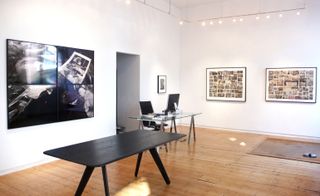
But, Fabres insists, the work here is varied and reflects varied histories; it is from Latin American rather than of Latin America
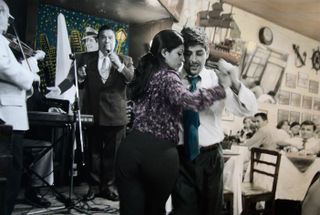
Leonora Vicuña creates elegies to neighborhood bars and restaurants. Pictured: Pareja en Cinzano Bar, Valparaiso, Chile, by Leonora Vicuña, 2001–2008.

The Brazillian artist Anna Bella Geiger explores themes of culture, identity, geography and cartography in her work. Pictured: Rrolos, by Anna Bella Geiger, 2011.

Ecuestre, by Andrés Durán, 2014 (P#1).

Mexican artist Jonathan Hernández de-captions and re-contextualises newspaper and advertising imagery. Pictured: Vulnerabilia (interiores), by Jonathan Hernandez, 2013.
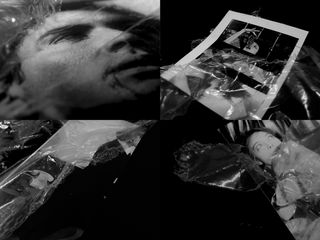
Chilean artist Nicolás Franco wraps pre-existing images and film stills in plastic and then reshoots them. Pictured: Lonesome Encounter with Melancholic Corpses (II), by Nicolás Franco, 2011.
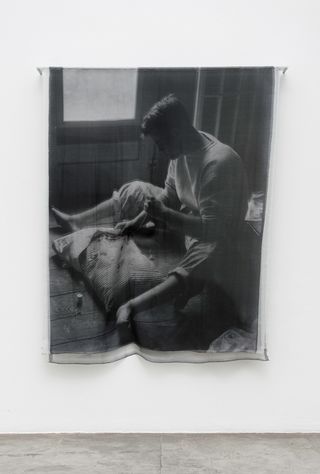
Rosãngela Rennó ignores the history of her subjects: instead using them as objects of survival, and playing technical tricks on the negatives before presenting them on gauze, lit and layered. Pictured: Insólidos Series – Untitled (costura), by Rosãngela Rennó, 2014.
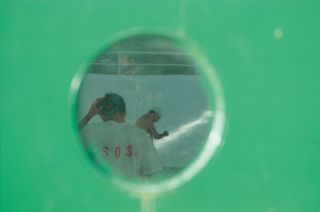
The Argentinean photographer Marcelo Brodsky is perhaps the most explicitly political of the artists here. Pictured: SOS, Madrid, by Marcelo Brodsky, 1992/2015.
INFORMATION
’Voces: Latin American Photography 1980–2015’ is on view until 9 January 2016
ADDRESS
Michael Hoppen Gallery
3 Jubilee Place
London, SW3 3TD
Wallpaper* Newsletter
Receive our daily digest of inspiration, escapism and design stories from around the world direct to your inbox
-
 The moments fashion met art at the 60th Venice Biennale
The moments fashion met art at the 60th Venice BiennaleThe best fashion moments at the 2024 Venice Biennale, with happenings from Dior, Golden Goose, Balenciaga, Burberry and more
By Jack Moss Published
-
 Crispin at Studio Voltaire, in Clapham, is a feast for all the senses
Crispin at Studio Voltaire, in Clapham, is a feast for all the sensesNew restaurant Crispin at Studio Voltaire is the latest opening from the brains behind Bistro Freddie and Bar Crispin, with interiors by Jermaine Gallagher
By Billie Brand Published
-
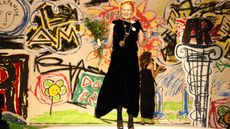 Vivienne Westwood’s personal wardrobe goes up for sale in landmark Christie’s auction
Vivienne Westwood’s personal wardrobe goes up for sale in landmark Christie’s auctionThe proceeds of ’Vivienne Westwood: The Personal Collection’, running this June, will go to the charitable causes she championed during her lifetime
By Jack Moss Published
-
 Frida Kahlo: intimate photographs show the artist in her element
Frida Kahlo: intimate photographs show the artist in her elementBy Charlotte Jansen Last updated
-
 Neighbourhood watch: Eamonn Doyle hones in on Dublin’s streets
Neighbourhood watch: Eamonn Doyle hones in on Dublin’s streetsBy Jessica Klingelfuss Last updated
-
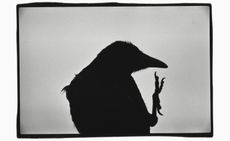 Masahisa Fukase and the sorrow of lost love, solitude and death
Masahisa Fukase and the sorrow of lost love, solitude and deathBy Jessica Klingelfuss Last updated
-
 Wonders of nature: Michael Hoppen Gallery debuts an online collection of works by Karl Blossfeldt
Wonders of nature: Michael Hoppen Gallery debuts an online collection of works by Karl BlossfeldtBy Ali Morris Last updated
-
 The photographer who captured the defiant beauty of Frida Kahlo’s closet
The photographer who captured the defiant beauty of Frida Kahlo’s closetBy Nick Compton Last updated
-
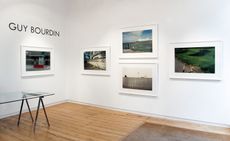 Guy Bourdin's 'Walking Legs' go on show at Michael Hoppen Gallery
Guy Bourdin's 'Walking Legs' go on show at Michael Hoppen GalleryBy Jessica Klingelfuss Last updated
-
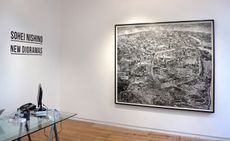 Sohei Nishino’s intricate new works put world cities on the map
Sohei Nishino’s intricate new works put world cities on the mapBy Florence Waters Last updated
-
 Nobuyoshi Araki explores the beauty of Japanese bondage and flower arranging
Nobuyoshi Araki explores the beauty of Japanese bondage and flower arrangingBy Jessica Klingelfuss Last updated